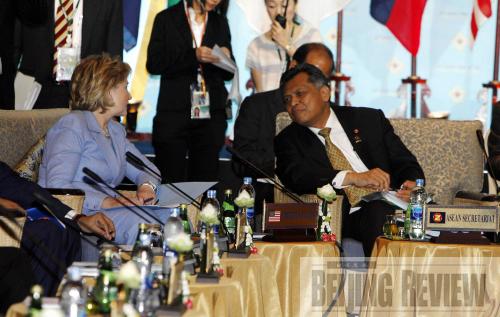|
The four lower Mekong countries are all landlocked states in Southeast Asia and are less developed economically. Through negotiations, the United States has shown the importance it gives to landlocked countries within ASEAN. Still, it remains an open question as to how much Washington can invest in ASEAN nations against the backdrop of the global economic downturn.
Regional implications
The United States could not have found a better time to return to Southeast Asia. When the Obama Administration took over, some countries in the region—like Indonesia, Thailand and Malaysia—witnessed their own transfers of power.
For one, Indonesian President Susilo Bambang Yudhoyono entered a second term during which he is expected to build on his previous successes. Cooperation between Washington and Jakarta will definitely offer great opportunities for both sides. And President Obama's special experience of having spent part of his childhood in Indonesia will further strengthen bilateral cooperation.
For now, the world should treat the America's return to Southeast Asia positively. However, if Washington's goal is to deter China—or drive a wedge between China and its ASEAN partners—then these moves would signify a terrible blunder.
This is because the only result of such an intervention—with such an intention—would be a lose-lose situation: harming China without achieving anything in the process.
On the one hand, such trans-Pacific standoffs would not meet with the mainstream of Sino-U.S. cooperation. On the other, ASEAN countries would not work with the United States to do so, as these maneuverings would hurt both ASEAN countries' and U.S. interests in the process.
In fact, China's growing influence in the region was not because of any U.S. absence or power vacuum, but a result of China's commitment to establishing an amicable, peaceful and prosperous neighborhood and seeking win-win outcomes.
As Professor Kenton Clymer from Northern Illinois University pointed out, China has adopted a more sensible policy toward Southeast Asia in recent years than the United States. Beijing, he noted, has convinced Southeast Asian countries that China's place in the neighborhood is beneficial and not a threat. This has led to significant cooperation.
Regional integration between Asian powers and ASEAN member states remains ongoing. The involvement of a superpower like the United States, if it does not disturb regional cooperation, will portend to be a promising development for the cooperative process.
America's return to Southeast Asia brings more focus on the South China Sea, where China has disputes with its neighbors. China's stance on maintaining territorial sovereignty and integrity will never change. Meanwhile, it will stick to the principles of exercising restraint and resolving disputes through peaceful negotiations, while shying away from conflict. The settlement of the South China Sea issue will not only serve the interests of China and ASEAN countries, but also those of the United States.
China and the United States each possess different advantages in terms of developing relations with Southeast Asian countries. China is committed to building a "harmonious Asia"—a good-neighbor policy and development strategy based on seeking common prosperity throughout the region. Likewise, the United States enjoys traditional friendships and close economic and trade ties with Southeast Asian countries. The giant economic power and technological advancement that the United States represents are also most attractive to ASEAN member nations. Thus, ASEAN warmly welcomes Washington to participate in its economic and security cooperation for its own consideration and interests.
Some small and medium-sized ASEAN countries have long been accustomed to maintaining a balance between big powers. They will not lean on either China or the United States, but will try to make more friends to gain bigger—and better—interests.
 |
|
DISCUSSION OF REGIONAL EVENTS: U.S. Secretary of State Hillary Clinton shares opinions with Surin Pitsuwan, Secretary General of the Association of Southeast Asian Nations (ASEAN) in Phuket, Thailand on July 23 ahead of the 16th ASEAN Regional Forum LIU LIANFEN |
The author is director of the Department for Asia-Pacific Security and Cooperation at the China Institute of International Studies
| 